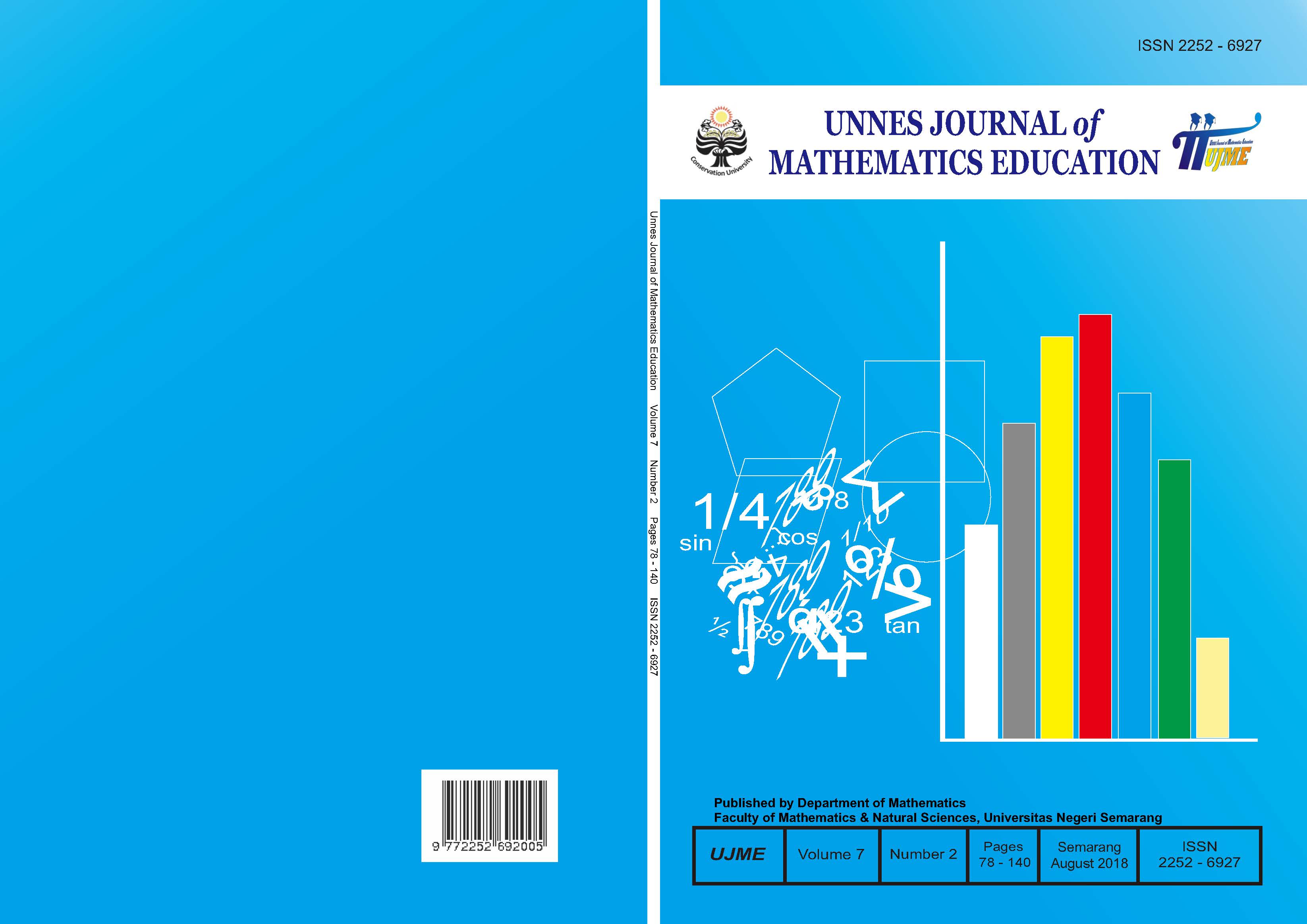Mathematical connection ability on creative problem solving with ethnomathematics nuance learning model
##plugins.themes.academic_pro.article.main##
Abstract
The purpose of this research was to analyze the completeness of mathematical connection ability on Creative Problem Solving with ethnomathematics nuance learning model and its differences on Direct Instruction learning model and to analyze the influence of cultural love attitude toward mathematical connection ability. The materials in this research were rectangle, square, and trapezoid. The population in this research were students of grade VII A, VII B, and VII C at a junior high school in Wonosobo academic year 2017/2018 and selected with cluster random sampling. Particularly, grade VII A was chosen as the experimental class and taught by using Creative Problem Solving with ethnomathematics nuance learning model, while grade VII B as a control class that was taught by using Direct Instruction learning model. The data collection methods used were documentation, written test, and questionnaire. The research instrument used were written test and questionnaire. Then, the data were analyzed by one-sided proportion test, two-point equality test, equality test of two proportions, and regression analysis. Eventually, the results showed that (1) the mathematical connection ability of grade VII students with Creative Problem Solving with ethnomathematics nuance learning model reached the classical completeness; (2) the average of mathematical connection ability by using Creative Problem Solving with ethnomathematics nuance learning model of grade VII better than average of mathematical connection ability using Direct Instruction learning model; (3) the cultural love attitude affected to mathematical connection ability.
##plugins.themes.academic_pro.article.details##
References
Ismawanto. (2014). Pengembangan CD Interaktif Berbantuan Swishmax Dengan Model Etnomatematika pada Materi Bangun Ruang Sisi Datar Kelas VIII Semester II. Prosiding Mathematics and Science Forum 2014, 2(2): 527-534.
Jaijan, W., & Suladda L. (2012). Making Mathematical Connections with Transformations Using Open Approach. HRD Jounal, 3(1): 91-100.
Mhlolo, M.K, Hamsa V., & Marc S. (2012). The Nature and Quality of The Mathematical Connections Teachers Make. Pythagoras, 33(1): 1-9.
Nofitasari, Lusi, Zaenuri Mastur, & Mashuri. (2015). Keefektifan Model Pembelajaran Tutor Sebaya Bernuansa Etnomatematika Terhadap Kemampuan Pemecahan Masalah Peserta Didik pada Materi Segiempat. Unnes Journal of Mathematics Education, 5(1): 54-61
Rajagukguk, Waminton. (2011). Upaya Meningkatkan Kemampuan Pemecahan Masalah Matematika Siswa Dengan Penerapan Teori Belajar Bruner pada Pokok Bahasan Trigonometri di Kelas X SMA Negeri 1 Kualuh Hulu Aek Kanopan T.A. 2009/2010. VISI, 19(1): 427-442.
Saputra, M. F. A., & Mashuri. 2015. Komparasi Kemampuan Pemecahan Masalah Antara Pembelajaran Creative Problem Solving dan Problem Posing. Unnes Journal of Mathematics Education, 4(1): 50-58.
Sugiman. (2008). Koneksi Matematik dalam Pembelajaran Matematika di Sekolah Menengah Pertama. Universitas Negeri Yogyakarta. Tersedia di http://staff.uny.ac.id. [diakses 16-05-2017].
Suryani, Atik, Sugiarto, & Alamsyah. (2013). Keefektifan Creative Problem Solving terhadap Hasil Belajar Peserta Didik MTs Miftakhul Khoirot. Unnes Journal of Mathematics Education, 2(2): 1-9.
Van De Walle, John.A. (2008). Matematika Sekolah Dasar dan Menengah. Jakarta: Erlangga.
